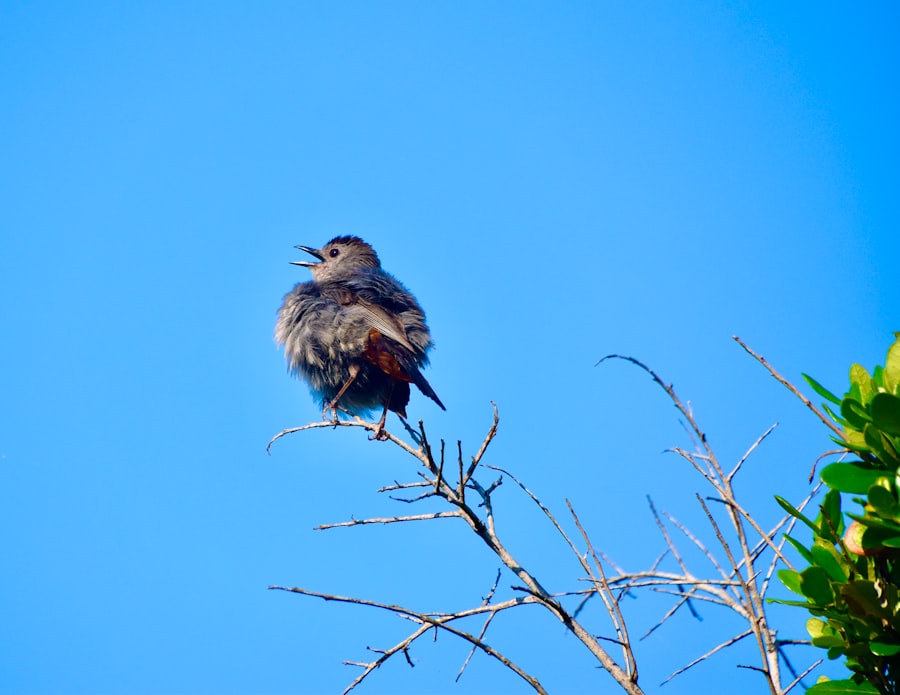Ducks have been an integral part of Indian agriculture for centuries, providing a valuable source of meat, eggs, and feathers. There are several indigenous duck breeds in India that have adapted to the diverse climatic conditions and are well-suited for local farming practices. These breeds play a crucial role in the rural economy and are an important source of livelihood for many small-scale farmers. The diversity of duck breeds in India reflects the rich cultural and agricultural heritage of the country, making them an important aspect of the agricultural landscape.
Table of Contents
- 1 Popular Duck Breeds in India
- 2 Characteristics and Features of Indian Duck Breeds
- 3 Importance of Duck Breeds in Indian Agriculture
- 4 Challenges and Threats Faced by Indian Duck Breeds
- 5 Conservation Efforts for Indian Duck Breeds
- 6 Future Prospects for Duck Breeds in India
- 7 FAQs
- 7.1 What are the different duck breeds found in India?
- 7.2 What are the characteristics of Indian Runner ducks?
- 7.3 What are the characteristics of Khaki Campbell ducks?
- 7.4 What are the characteristics of White Pekin ducks?
- 7.5 What are the characteristics of Indian Runner ducks?
- 7.6 What are the common uses of ducks in India?
Key Takeaways
- There are several duck breeds in India, each with unique characteristics and features.
- Some popular duck breeds in India include the Khaki Campbell, Indian Runner, and White Pekin.
- Indian duck breeds are known for their adaptability to local climates and their ability to forage for food.
- Duck breeds play a crucial role in Indian agriculture by providing meat, eggs, and pest control services.
- Indian duck breeds face challenges such as habitat loss, predation, and competition from other poultry species.
Popular Duck Breeds in India
Some of the popular duck breeds in India include the Khaki Campbell, Indian Runner, White Pekin, and Desi ducks. The Khaki Campbell is known for its high egg production, while the Indian Runner is valued for its ability to forage and feed on insects. The White Pekin is a large, meaty breed that is commonly raised for its succulent meat, and the Desi ducks are indigenous to India and are well-adapted to local environmental conditions. Each breed has its own unique characteristics and is valued for its specific traits, making them an important part of the Indian agricultural landscape.
Characteristics and Features of Indian Duck Breeds
Indian duck breeds are known for their adaptability to local environmental conditions, disease resistance, and high reproductive efficiency. They are well-suited for free-range farming and are able to thrive on a variety of natural feeds, making them a sustainable option for small-scale farmers. These breeds also exhibit a wide range of colors, sizes, and plumage patterns, adding to the aesthetic appeal of duck farming in India. Additionally, Indian duck breeds are known for their ability to control pests and weeds in rice fields, making them an important component of integrated pest management in agriculture.
Indian duck breeds are also known for their ability to withstand harsh climatic conditions, making them well-suited for farming in diverse regions of the country. They have a high tolerance for heat and humidity, as well as cold temperatures, making them adaptable to different seasons. Furthermore, Indian duck breeds are known for their calm and docile nature, making them easy to handle and manage on small farms. These characteristics make them an ideal choice for small-scale farmers who are looking for sustainable and low-input livestock options.
Importance of Duck Breeds in Indian Agriculture
Duck farming plays a crucial role in Indian agriculture by providing a source of nutritious meat, eggs, and feathers. Ducks are efficient converters of feed into high-quality protein, making them an important source of animal protein for rural communities. Additionally, duck eggs are highly nutritious and are a valuable source of income for small-scale farmers. Duck feathers are also used in various traditional crafts and industries, adding to the economic value of duck farming in India.
Ducks also play a significant role in pest management in rice fields, as they feed on insects, snails, and weeds, reducing the need for chemical pesticides. This not only reduces the environmental impact of farming but also contributes to sustainable agricultural practices. Furthermore, duck manure is a valuable source of organic fertilizer, which can be used to improve soil fertility and enhance crop yields. Overall, duck farming contributes to the diversification and sustainability of Indian agriculture, making it an important aspect of rural livelihoods.
Challenges and Threats Faced by Indian Duck Breeds
Despite their importance, Indian duck breeds face several challenges and threats that jeopardize their survival. One of the major challenges is the loss of genetic diversity due to crossbreeding with exotic breeds and the decline in traditional farming practices. This has led to the loss of unique traits and characteristics that are specific to indigenous duck breeds, posing a threat to their long-term viability. Additionally, the lack of awareness about the value of indigenous duck breeds has led to a decline in their population and distribution.
Another challenge faced by Indian duck breeds is the spread of diseases and parasites, which can have devastating effects on duck populations. The lack of access to veterinary care and disease management practices further exacerbates this problem, leading to high mortality rates among ducks. Furthermore, habitat loss and environmental degradation have also impacted the availability of suitable breeding grounds for ducks, further threatening their survival. These challenges highlight the urgent need for conservation efforts to protect Indian duck breeds from extinction.
Conservation Efforts for Indian Duck Breeds

Several conservation efforts have been initiated to protect and preserve Indian duck breeds from extinction. These efforts include the establishment of conservation breeding programs, the creation of gene banks for indigenous duck breeds, and the promotion of sustainable farming practices that support the conservation of duck populations. Additionally, awareness campaigns and educational programs have been implemented to highlight the value of indigenous duck breeds and promote their conservation among farmers and rural communities.
Furthermore, collaborations between government agencies, non-governmental organizations, and research institutions have been established to develop conservation strategies and policies for Indian duck breeds. These efforts aim to address the challenges faced by indigenous duck breeds and ensure their long-term survival in the face of changing agricultural practices and environmental conditions. By promoting sustainable farming practices and preserving genetic diversity, these conservation efforts play a crucial role in safeguarding the future of Indian duck breeds.
Future Prospects for Duck Breeds in India
The future prospects for Indian duck breeds are promising as conservation efforts gain momentum and awareness about their value increases among farmers and consumers. With the implementation of sustainable farming practices and the promotion of indigenous duck breeds, there is potential for the revitalization of duck farming in India. This not only contributes to food security and rural livelihoods but also supports sustainable agricultural practices that benefit the environment.
Furthermore, the growing interest in organic and sustainable food production presents an opportunity for Indian duck breeds to gain recognition as a valuable source of high-quality protein and eggs. By promoting indigenous duck breeds as a sustainable livestock option, there is potential for increased demand for their products in domestic and international markets. This not only adds economic value to duck farming but also contributes to the preservation of traditional farming practices and cultural heritage.
In conclusion, Indian duck breeds play a crucial role in the agricultural landscape by providing a source of nutritious food, pest management services, and organic fertilizer. Despite facing challenges such as genetic erosion, disease outbreaks, and habitat loss, conservation efforts are underway to protect and preserve these valuable breeds. With increased awareness about their value and the implementation of sustainable farming practices, there is potential for the revitalization of duck farming in India. By promoting indigenous duck breeds as a sustainable livestock option, there is hope for a bright future for these valuable animals in Indian agriculture.
If you’re interested in learning more about duck breeds in India, you might also want to check out an article on PoultryWizard about converting a shed to a chicken coop. Understanding the different types of poultry housing can be beneficial for anyone looking to raise ducks or chickens, and this article provides valuable insights into creating a suitable living space for your feathered friends. You can read the article here.
FAQs
What are the different duck breeds found in India?
There are several duck breeds found in India, including the Indian Runner, Khaki Campbell, White Pekin, and Indian Runner.
What are the characteristics of Indian Runner ducks?
Indian Runner ducks are known for their upright posture and distinctive tall, slim build. They are excellent egg layers and are often used for their high productivity.
What are the characteristics of Khaki Campbell ducks?
Khaki Campbell ducks are known for their excellent egg-laying abilities, with the potential to lay up to 300 eggs per year. They are also hardy and adaptable to various climates.
What are the characteristics of White Pekin ducks?
White Pekin ducks are known for their large size and white plumage. They are popular for meat production and are also good egg layers.
What are the characteristics of Indian Runner ducks?
Indian Runner ducks are known for their upright posture and distinctive tall, slim build. They are excellent egg layers and are often used for their high productivity.
What are the common uses of ducks in India?
Ducks in India are commonly used for egg production, meat production, pest control in rice fields, and as pets or ornamental birds.
Meet Walter, the feathered-friend fanatic of Florida! Nestled in the sunshine state, Walter struts through life with his feathered companions, clucking his way to happiness. With a coop that’s fancier than a five-star hotel, he’s the Don Juan of the chicken world. When he’s not teaching his hens to do the cha-cha, you’ll find him in a heated debate with his prized rooster, Sir Clucks-a-Lot. Walter’s poultry passion is no yolk; he’s the sunny-side-up guy you never knew you needed in your flock of friends!







